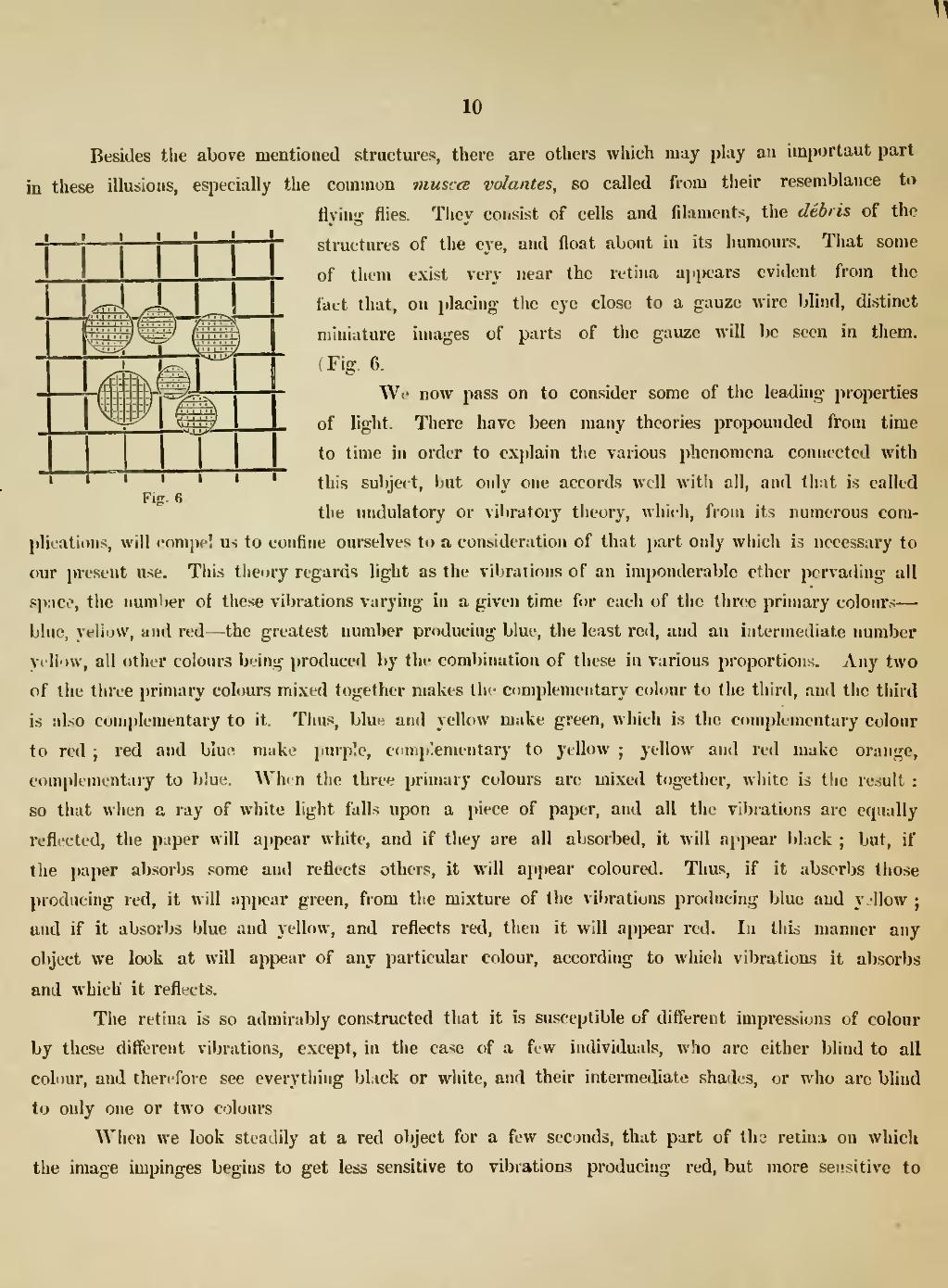Besides the above mentioned structures, there are others which may play an important part in these illusions, especially the common muscæ volantes, so called from their resemblance to flying-flies.

|
Fig. 6. |
They consist of cells and filaments, the débris of the structures of the eye, and float about in its humours. That some of them exist very near the retina appears evident from the fact that, on placing the eye close to a gauze wire blind, distinct miniature images of parts of the gauze will be seen in them. Fig. 6.
We now pass on to consider some of the leading properties of light. There have been many theories propounded from time to time in order to explain the various phenomena connected with this subject, but only one accords well with all, and that is called the undulatory or vibratory theory, which, from its numerous complications, will compel us to confine ourselves to a consideration of that part only which is necessary to our present use. This theory regards light as the vibrations of an imponderable ether pervading all space, the number of these vibrations varying in a given time for each of the three primary colours—blue, yellow, and red—the greatest number producing blue, the least red, and an intermediate number yellow, all other colours being produced by the combination of these in various proportions. Any two of the three primary colours mixed together makes the complementary colour to the third, and the third is also complementary to it. Thus, blue and yellow make green, which is the complementary colour to red; red and blue make purple, complementary to yellow; yellow and red make orange, complementary to blue. When the three primary colours are mixed together, white is the result: so that when a ray of white light falls upon a piece of paper, and all the vibrations are equally reflected, the paper will appear white, and if they are all absorbed, it will appear black; but, if the paper absorbs some and reflects others, it will appear coloured. Thus, if it absorbs those producing red, it will appear green, from the mixture of the vibrations producing blue and yellow; and if it absorbs blue and yellow, and reflects red, then it will appear red. In this manner any object we look at will appear of any particular colour, according to which vibrations it absorbs and which it reflects.
The retina is so admirably constructed that it is susceptible of different impressions of colour by these different vibrations, except, in the case of a few individuals, who are either blind to all colour, and therefore see everything black or white, and their intermediate shades, or who are blind to only one or two colours
When we look steadily at a red object for a few seconds, that part of the retina on which the image impinges begins to get less sensitive to vibrations producing red, but more sensitive to
